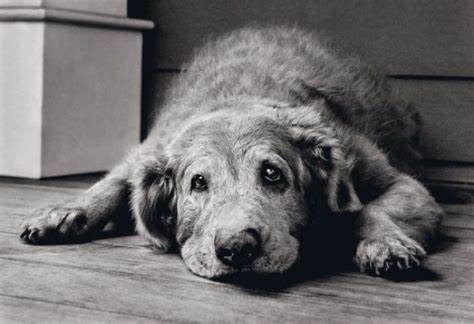Will the dog dream?
Whether the dog's dream is scientifically uncertain, but it is hard to imagine that they have no dreams. We have all observed that our dogs exhibit behavior similar to being fully awake during sleep. The strokes of the legs, wailing, roaring, shaking the tail, chewing the chin and twitching the nose inspired us to know that our dog was dreaming.
Our understanding of dogs and dreams
Although our understanding of this topic is very limited, the following known information helps us believe that dogs do experience dreams. According to MIT News, MIT professor of neuroscience Matthew Wilson and graduate student Kenwell Louis in 2001 studied the relationship between memory, sleep, and dreams. They found that when mice were trained to run along the circular orbit of food rewards, their brains produced a unique pattern of discharge of neurons (brain cells). The researchers repeated brain monitoring while the mouse was sleeping. They observed that whether the mouse was awake or asleep, the brain activity patterns associated with running were the same. In fact, these memories play at almost the same speed as when the mouse is awake.
Can we apply this to dogs?
What can we get from the dreams of mice and humans and apply this information to dogs? According to the "USA Today" website, Wilson believes that we can. "I guess, unless the mice and humans have anything special, the cat and the dog do exactly the same thing."
It is well known that the hippocampus, the part of the brain that collects and stores memory, is connected in the same way in all mammals. According to healthday.com, Professor Wilson said, "If you compare the hippocampus of a mouse to a dog and the cat to a human, then the hippocampus in the hippocampus contains all the same fragments." He believes that when the dog sleeps The images of past events will reappear in their minds, much like the way people recall experiences while dreaming.
According to the National Institutes of Health, most people's dreams occur in REM sleep. Dogs also experience rapid eye movement sleep. Psychology's website today says that during rapid eye movements, their breathing becomes more irregular and superficial. There may be muscle twitching during REM, and when you look closely, you often see rapid eye movements after closing the eyelids. During rapid eye movement sleep, behaviors that are thought to be related to dreaming (leg strokes, convulsions, vocalization, etc.) are most common.
What do we want to believe about dog dreams?
When we observe that our dogs are sleeping, it is almost impossible to imagine that they are not dreaming. Like the mice that Wilson and Louis studied, it's easy to believe that our four-legged good friends are reinterpreting their recent experiences: playing in dog parks, sniffing in the woods, chewing precious bones, chasing squirrels.
Our understanding of dogs and dreams
Although our understanding of this topic is very limited, the following known information helps us believe that dogs do experience dreams. According to MIT News, MIT professor of neuroscience Matthew Wilson and graduate student Kenwell Louis in 2001 studied the relationship between memory, sleep, and dreams. They found that when mice were trained to run along the circular orbit of food rewards, their brains produced a unique pattern of discharge of neurons (brain cells). The researchers repeated brain monitoring while the mouse was sleeping. They observed that whether the mouse was awake or asleep, the brain activity patterns associated with running were the same. In fact, these memories play at almost the same speed as when the mouse is awake.
Can we apply this to dogs?
What can we get from the dreams of mice and humans and apply this information to dogs? According to the "USA Today" website, Wilson believes that we can. "I guess, unless the mice and humans have anything special, the cat and the dog do exactly the same thing."
It is well known that the hippocampus, the part of the brain that collects and stores memory, is connected in the same way in all mammals. According to healthday.com, Professor Wilson said, "If you compare the hippocampus of a mouse to a dog and the cat to a human, then the hippocampus in the hippocampus contains all the same fragments." He believes that when the dog sleeps The images of past events will reappear in their minds, much like the way people recall experiences while dreaming.
According to the National Institutes of Health, most people's dreams occur in REM sleep. Dogs also experience rapid eye movement sleep. Psychology's website today says that during rapid eye movements, their breathing becomes more irregular and superficial. There may be muscle twitching during REM, and when you look closely, you often see rapid eye movements after closing the eyelids. During rapid eye movement sleep, behaviors that are thought to be related to dreaming (leg strokes, convulsions, vocalization, etc.) are most common.
What do we want to believe about dog dreams?
When we observe that our dogs are sleeping, it is almost impossible to imagine that they are not dreaming. Like the mice that Wilson and Louis studied, it's easy to believe that our four-legged good friends are reinterpreting their recent experiences: playing in dog parks, sniffing in the woods, chewing precious bones, chasing squirrels.
The National Institutes of Health says that Sigmund Freud's theory is that dreaming is the "safety valve" of our unconscious desires. Maybe he is right, and when our dogs sleep, they dream of catching the neighbor's nasty cats, continuous abdominal friction and unlimited dog food, stealing Thanksgiving turkeys from the table.




 Login
Login
 Register
Register


